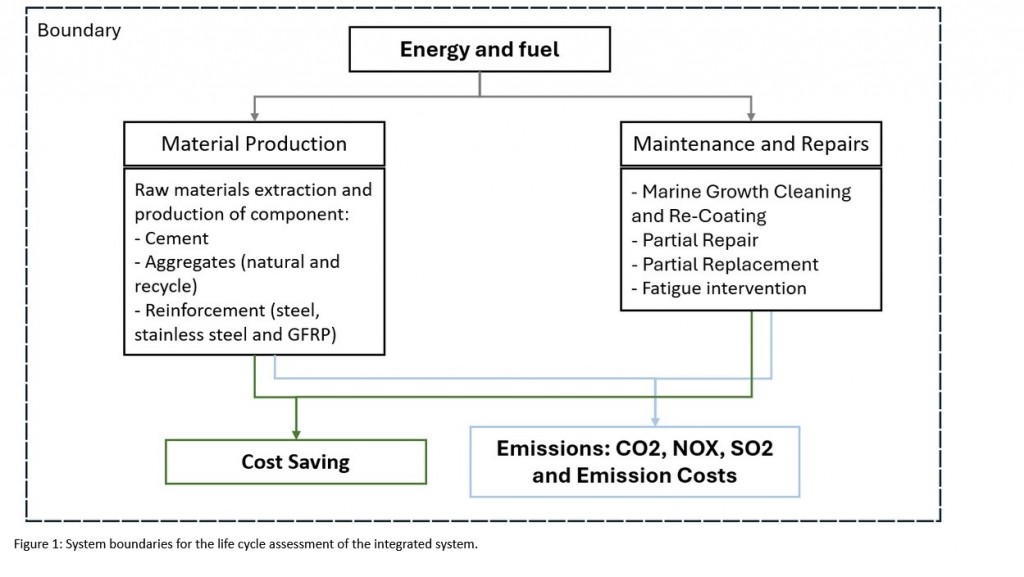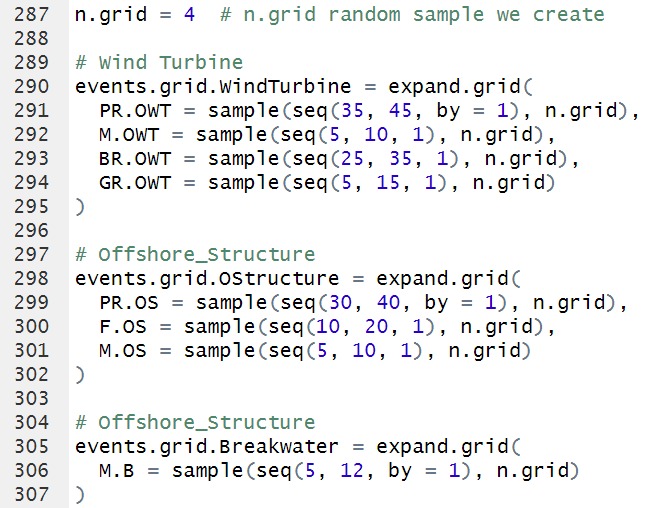
Goal and Scope of the Life Cycle Assessment of the Integrated system
The goal of this LCA is to evaluate the environmental performance of the integrated system, focusing on emission reductions (CO₂, SO₂, NOₓ) and cost savings resulting from system integration. Rather than analyzing absolute costs, this study assesses the savings achieved through reduced material usage and optimized maintenance strategies.
This study aims to identify the most sustainable and cost-efficient maintenance strategy for the integrated system while ensuring compliance with structural and functional requirements.
The assessment focuses on the life cycle of the integrated system, covering the following key stages:
- Material Production: Evaluates the environmental impact of producing all required materials. Accounts for cost savings due to the reduction in material demand, achieved through the protective role of the breakwater.
- Maintenance and Repairs: Analyzes the frequency, durability, and intensity of maintenance and repair interventions. Compares different maintenance strategies to determine their environmental impact and cost efficiency.
The system boundaries are illustrated in Figure 1, detailing the life cycle stages included in the analysis and the associated emissions.
This Life Cycle Assessment (LCA) focuses on evaluating the environmental impact of specific components within each system rather than the entire infrastructure. The analysis considers the support structure of the wind turbine, the deck of the oil offshore structure, and the parapet wall of the breakwater. To obtain a more comprehensive assessment of the integrated system, a future study should include all structural elements.
Additionally, this LCA excludes the environmental impacts of construction methods and the decommissioning phase, as the primary objective is to assess material manufacturing and maintenance throughout the system’s lifespan. Constructability was not analyzed, and since the breakwater composition remains largely unchanged, it was not included in the cost savings analysis.
Building the Life Cycle Analysis and Multi-Objective Optimization
To conduct this analysis, our team implemented our variables in R-studio. During this evaluation we had 3 products, and 3 maintenance integrations. First one being the original seperate maintenance plans for each system, and Option 1 & Option 2 as 2 integrated plans.


While evaluating these options, we considered the fact that maintenance intervention frequencies are not fixed values for our structure types. Offshore and other marine-related structures are typically inspected on an annual or biannual basis, after which decisions are made regarding necessary interventions. The frequencies incorporated into the original maintenance timelines were derived from historical field data and prior research, representing industry averages rather than absolute values. Consequently, these frequencies may exhibit slight variations.
In light of this, and given the similarities in maintenance actions across different systems, we have established reasonable intervals for intervention frequencies, as outlined below. When defining these ranges, we carefully considered the maximum allowable time limits to ensure both safety and structural integrity without compromising necessary interventions.
As discussed previously, we have combined maintenance actions for the activities that are similar for each structure. Also the strategical layout of the combined system has significant advantages on building aging, and ease of application of maintenance. Under the consideration of all these the intervals shaped as shown below.

This life cycle assessment is carried onto the multi-objective optimization between different variables which are explained further in the next section. (Section 6. Multi-Objective Optimization)